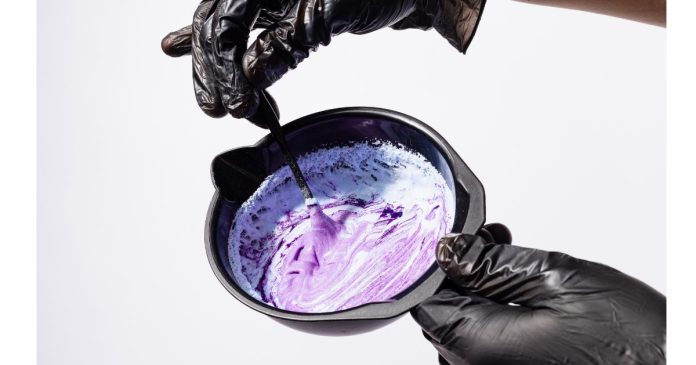Henna, a plant-based dye derived from the Lawsonia inermis plant, has been used for centuries to color hair, skin, and nails. Known for its natural properties, henna is a great alternative to chemical hair dyes, offering a rich color while nourishing the hair. If you’re thinking about using henna to color your hair, here’s a step-by-step guide on how to use it effectively.
What is Henna?
Henna is a powder made from the dried leaves of the henna plant. When mixed with a liquid, it releases a red-orange dye that bonds with the keratin in your hair, resulting in a natural and vibrant color. Henna can create various shades, from coppery red to deep brown, depending on your natural hair color and the ingredients you mix it with.
Benefits of Henna Hair Dye
Before getting into the application process, let’s highlight some reasons why henna is an excellent choice for hair coloring:
- Chemical-Free: Henna is completely natural, making it a safer option for those with sensitive scalps or hair prone to damage from chemicals.
- Strengthens and Nourishes Hair: Henna coats the hair shaft, making it thicker and shinier while reducing split ends and breakage.
- Long-Lasting Color: Henna provides a rich color that can last for weeks, fading gradually without harsh roots.
- Soothes the Scalp: Henna can help balance oil production, soothe irritation, and even reduce dandruff.
What You’ll Need
To apply henna to your hair, gather the following:
- Henna powder (available in health food stores or online)
- Lemon juice or warm water (for mixing)
- A non-metallic bowl and spoon (metal can react with henna)
- Gloves (henna stains hands easily)
- A shower cap or plastic wrap (to cover your hair)
- An old towel or cape to protect your clothes
- Petroleum jelly or coconut oil (to protect your skin from stains)
Step-by-Step Guide to Using Henna
1. Prepare Your Hair
Start by washing your hair with a mild shampoo to remove any buildup, oils, or styling products. Don’t use conditioner, as it can create a barrier that prevents the henna from properly adhering to the hair. Dry your hair with a towel before applying henna.
2. Mix the Henna
In a non-metallic bowl, combine the henna powder with lemon juice or warm water. Stir until you achieve a smooth, thick paste. The consistency should be similar to yogurt—thick enough to stay on your hair without dripping. Let the paste sit for about 2-4 hours to allow the dye to release fully. If you want a darker hue, you can add ingredients like coffee or apple cider vinegar to the mix.
3. Protect Your Skin and Clothes
Henna can stain your skin and clothes, so it’s important to protect them. Apply petroleum jelly or coconut oil around your hairline, ears, and neck to prevent staining. Wear an old shirt or cape to protect your clothing.
4. Apply the Henna
Put on your gloves and start applying the henna to your hair, section by section. Begin at the roots and work your way down to the ends. Ensure every strand is thoroughly coated with the paste. For longer hair, you may need more henna, so adjust the amount as needed. Be careful not to apply henna too thickly, as this can make it difficult to rinse out later.
5. Wrap Your Hair
Once your hair is fully coated, wrap it in a shower cap or cover it with plastic wrap to keep the henna warm. This helps intensify the color. Leave the henna on your hair for 1-4 hours, depending on how intense you want the color. For a deeper shade, leave it on longer, but avoid going past four hours to prevent unnecessary dryness.
6. Rinse and Dry
After the allotted time, rinse your hair thoroughly with warm water. Avoid using shampoo right away, as it can strip the color. Gently rinse until the water runs clear. Let your hair air dry naturally. Henna color can take 24-48 hours to fully develop, so don’t worry if the color looks brighter immediately after rinsing. It will soften and settle into a more natural tone over the next few days.
7. Aftercare
Henna can dry your hair a little, so it’s best to use a mild conditioner after your first wash to keep your hair soft. Try to avoid using harsh chemical shampoos for the first few days after application to allow the color to fully set.
Tips for the Best Results
- Patch Test: Henna can produce different results depending on your hair type and color. It’s always a good idea to do a patch test on a small section of your hair to see how it reacts.
- Fresh Henna: Make sure the henna you use is fresh and stored properly. Old henna may not dye as effectively.
- Customizing Color: You can mix henna with other natural ingredients to alter the color. For example, adding indigo can create darker shades, while amla powder can help deepen the tone.
- Avoid Frequent Use: Henna is a strong dye, and while it’s safe, using it too often can lead to dryness. Every 4-6 weeks is usually ideal for reapplication.
Conclusion
Using henna as a hair dye is an excellent way to achieve vibrant, long-lasting color without the use of harsh chemicals. It’s natural, nourishing, and versatile, providing a healthier alternative to conventional hair dyes. With a little preparation and care, you can easily incorporate henna into your beauty routine and enjoy the benefits of both gorgeous color and stronger, healthier hair.



